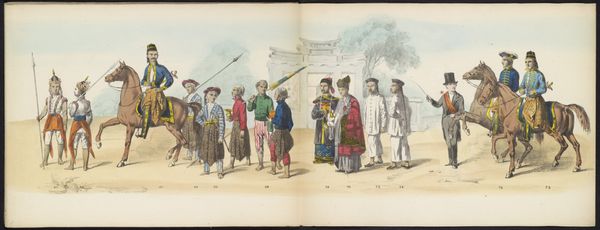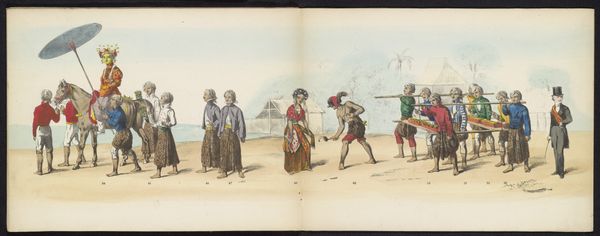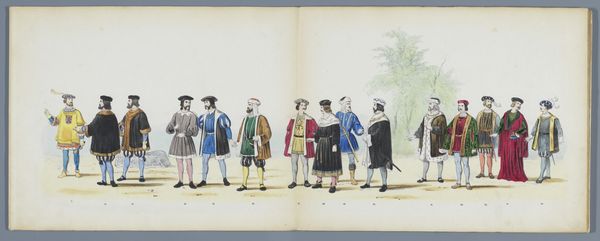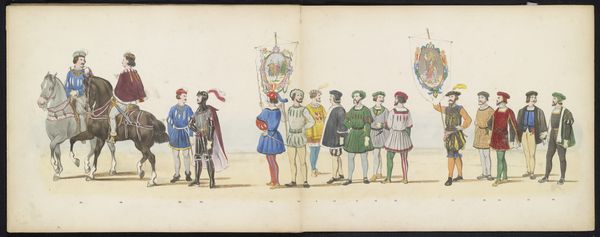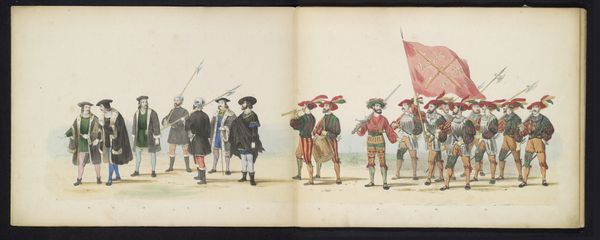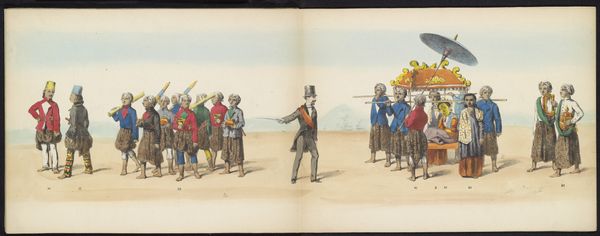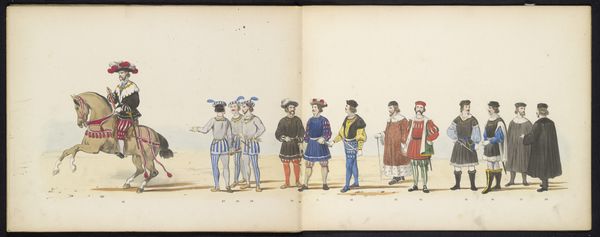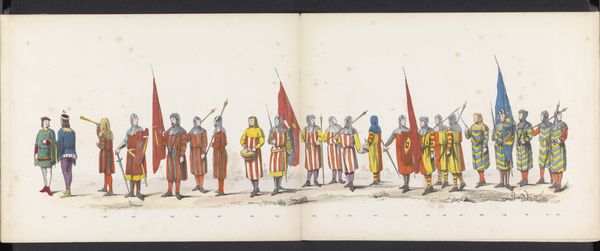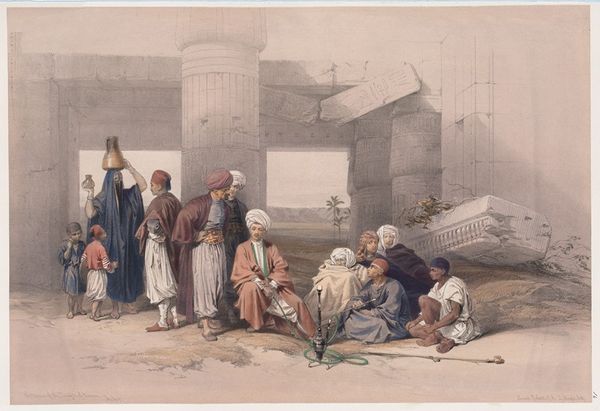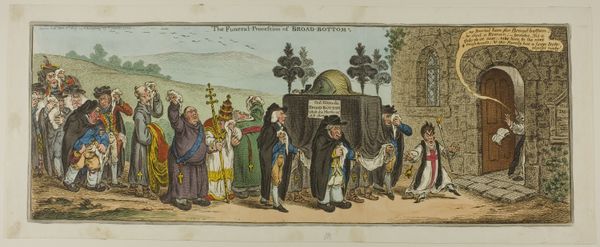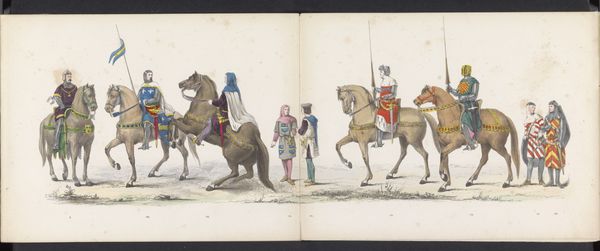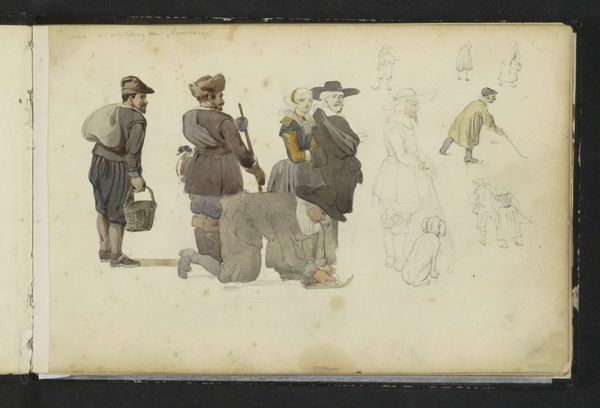
print, watercolor
#
16_19th-century
# print
#
watercolor
#
coloured pencil
#
pen-ink sketch
#
orientalism
#
watercolour illustration
#
genre-painting
Dimensions: height 270 mm, width 710 mm
Copyright: Rijks Museum: Open Domain
Curator: Johan Hendrik Hoffmeister created this watercolor illustration in 1857, titled "Maskerade van de Delftse studenten, 1857 (plaat 7)". Editor: Okay, my first impression is a stage play feeling to this piece – figures parading across what could be a minimalist stage. There's a whimsical quality, like costumed performers frozen mid-act. Curator: Precisely! And the artwork is not as simple as it appears. Although it depicts students, we must situate it within the broader context of Orientalism. This means considering how it reflects, and perhaps perpetuates, colonial perspectives on non-Western cultures and how that reflects power dynamics of the time. Editor: Ah, it has got that "storybook-vision" effect, so flattened, neat, a row of human pawns, I almost didn’t spot it as the representation of subjugation. What about the individuals? Curator: The portrayal of each figure merits attention. Note the students' attire, presumably intended to evoke an "Eastern" aesthetic through a Western lens, the illustration also employs various symbols and postures influenced by genre-painting that tell a specific, narrative. What can we glean from these constructed representations? Editor: Hmmm. So it is trying to convince us it is real through genre’s “snapshot” quality? There is definitely that static "tableau" vibe here. Look at the repetitive nature, so neatly and almost cruelly displayed, without motion. It's strange! The palette has something very charming about it but does it distract from the real context? Curator: I’m glad you picked up on that element. We might consider if its aesthetics distract from or rather amplify certain social themes that could be at play within the context. It is vital we scrutinize these representations for potential implications regarding identity and race and remember who is seeing and who is seen. Editor: True! Because if this illustration normalizes a view, and someone profits off that… then what feels charming to me might carry harmful history! Wow! Thanks for guiding my reflection! Curator: And thank you for making that observation. By acknowledging that an illustration as this carries those layers, we move towards more enlightened and conscious ways of relating with historical representations.
Comments
No comments
Be the first to comment and join the conversation on the ultimate creative platform.
